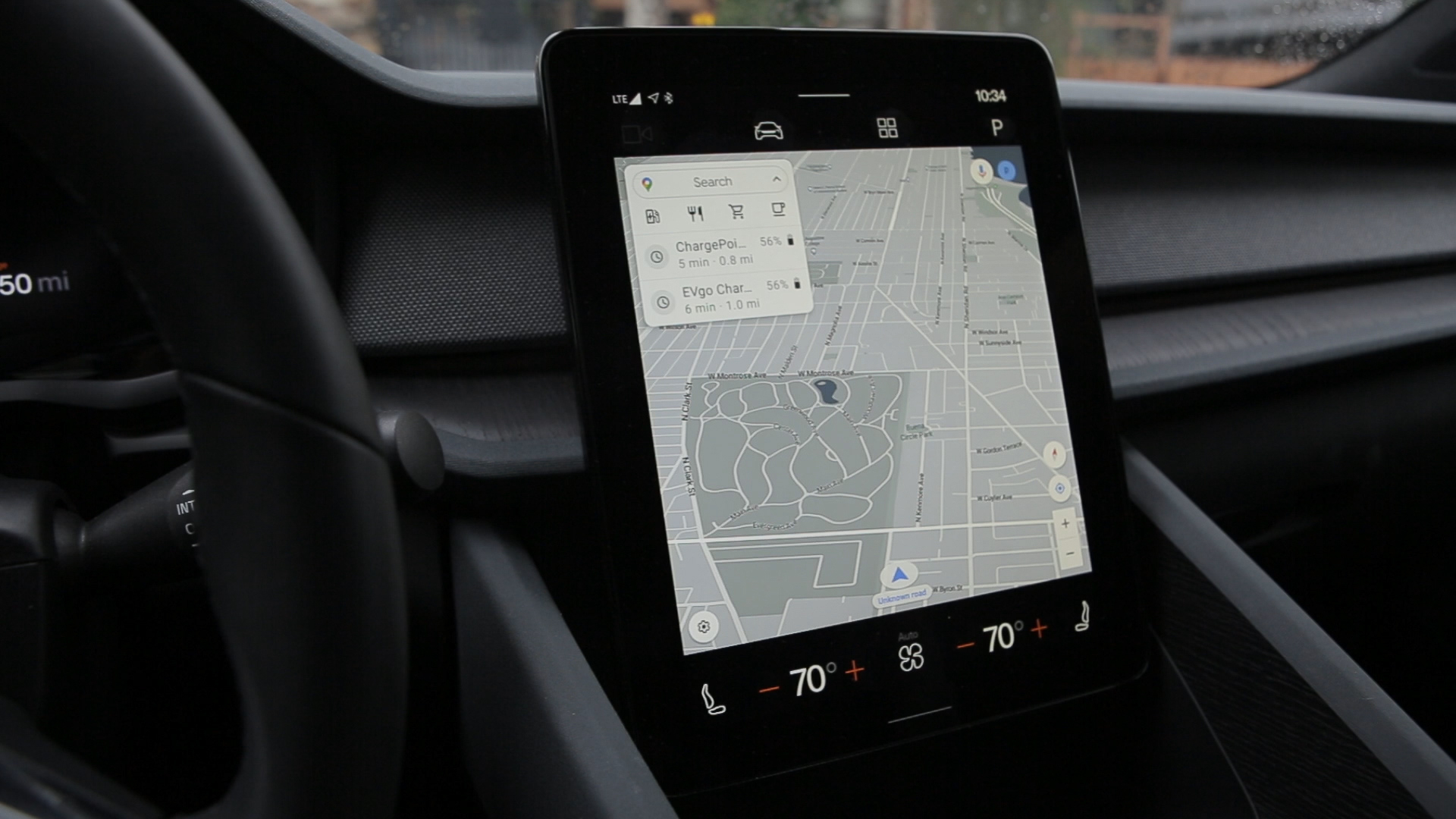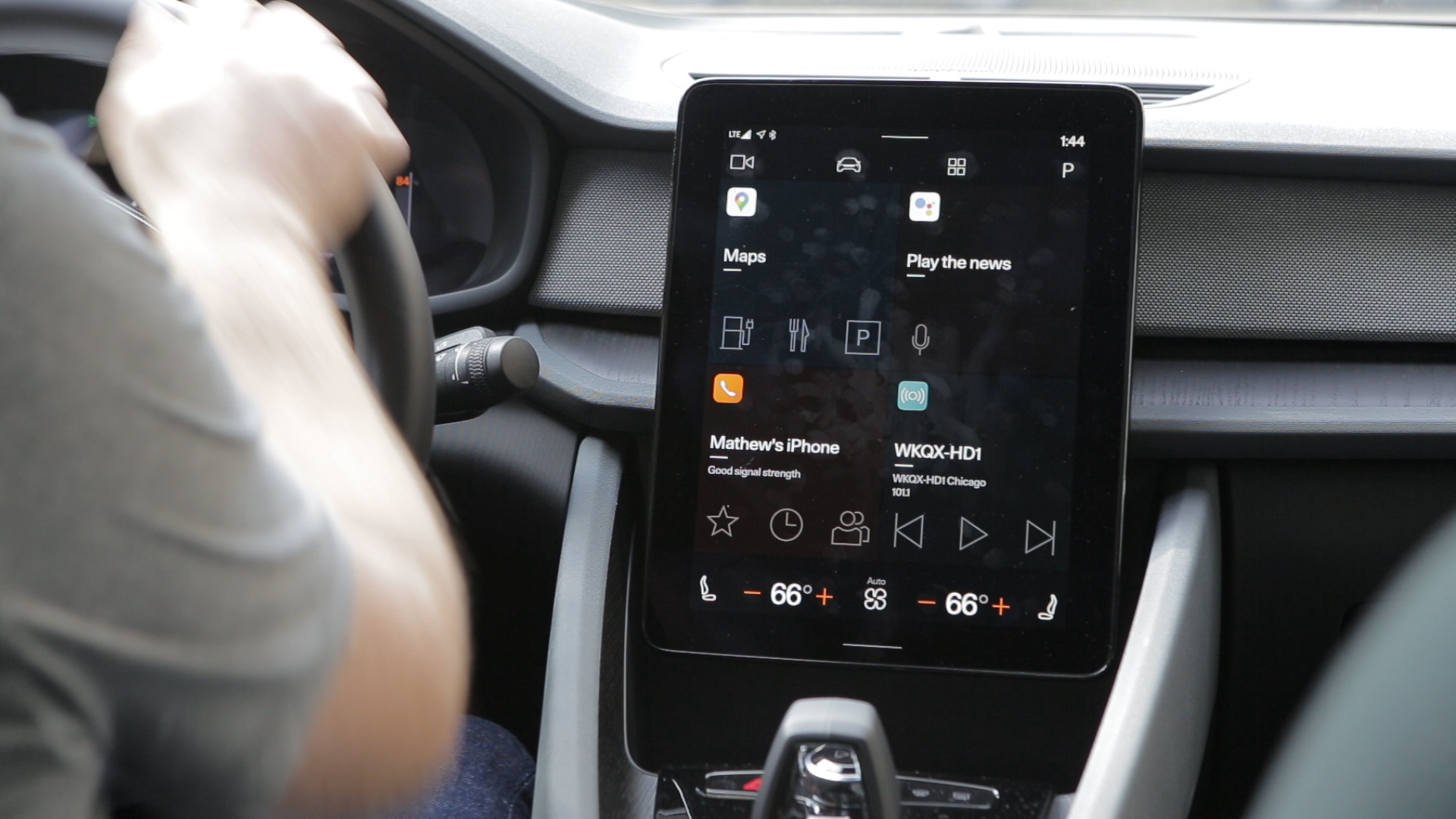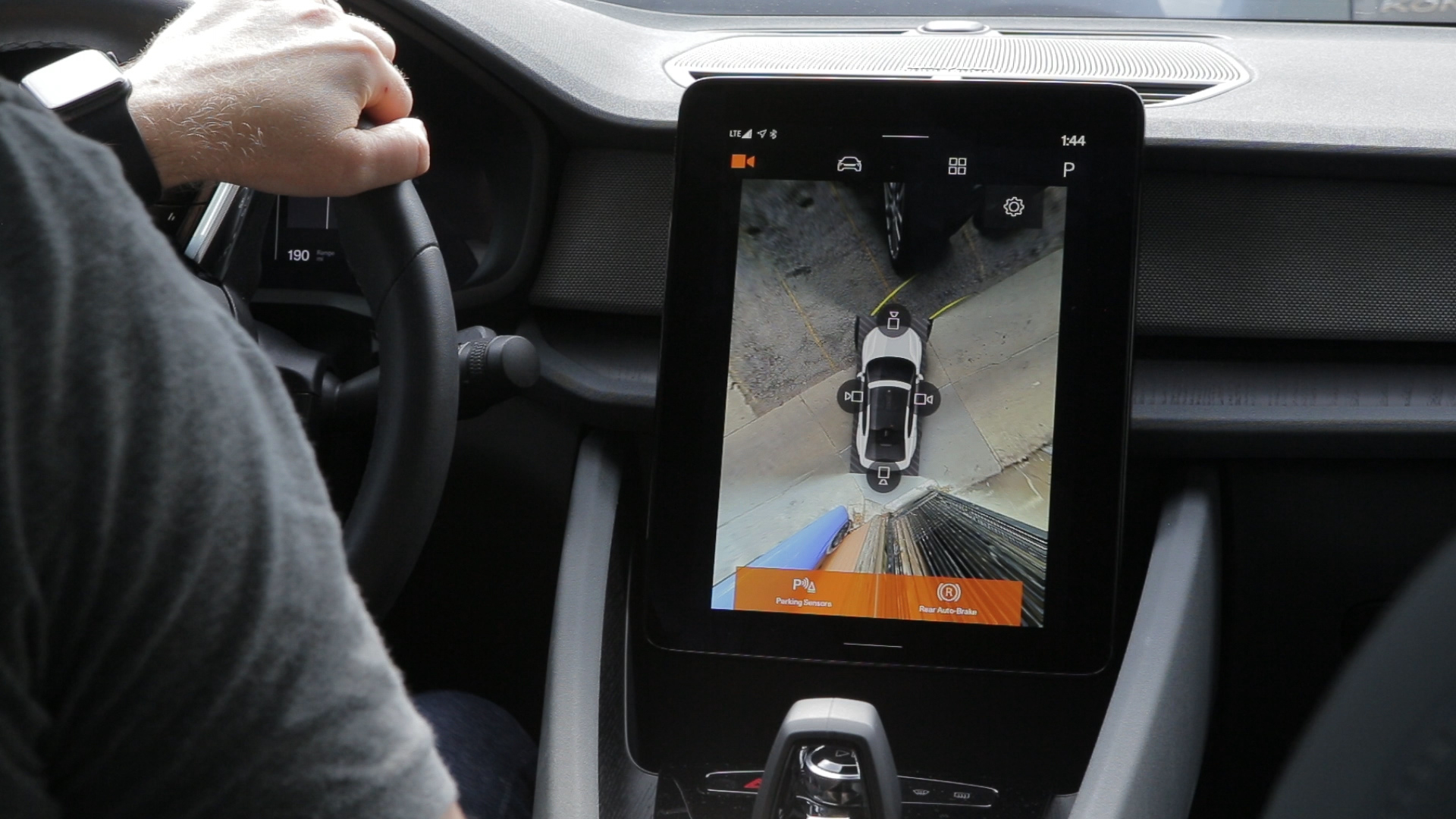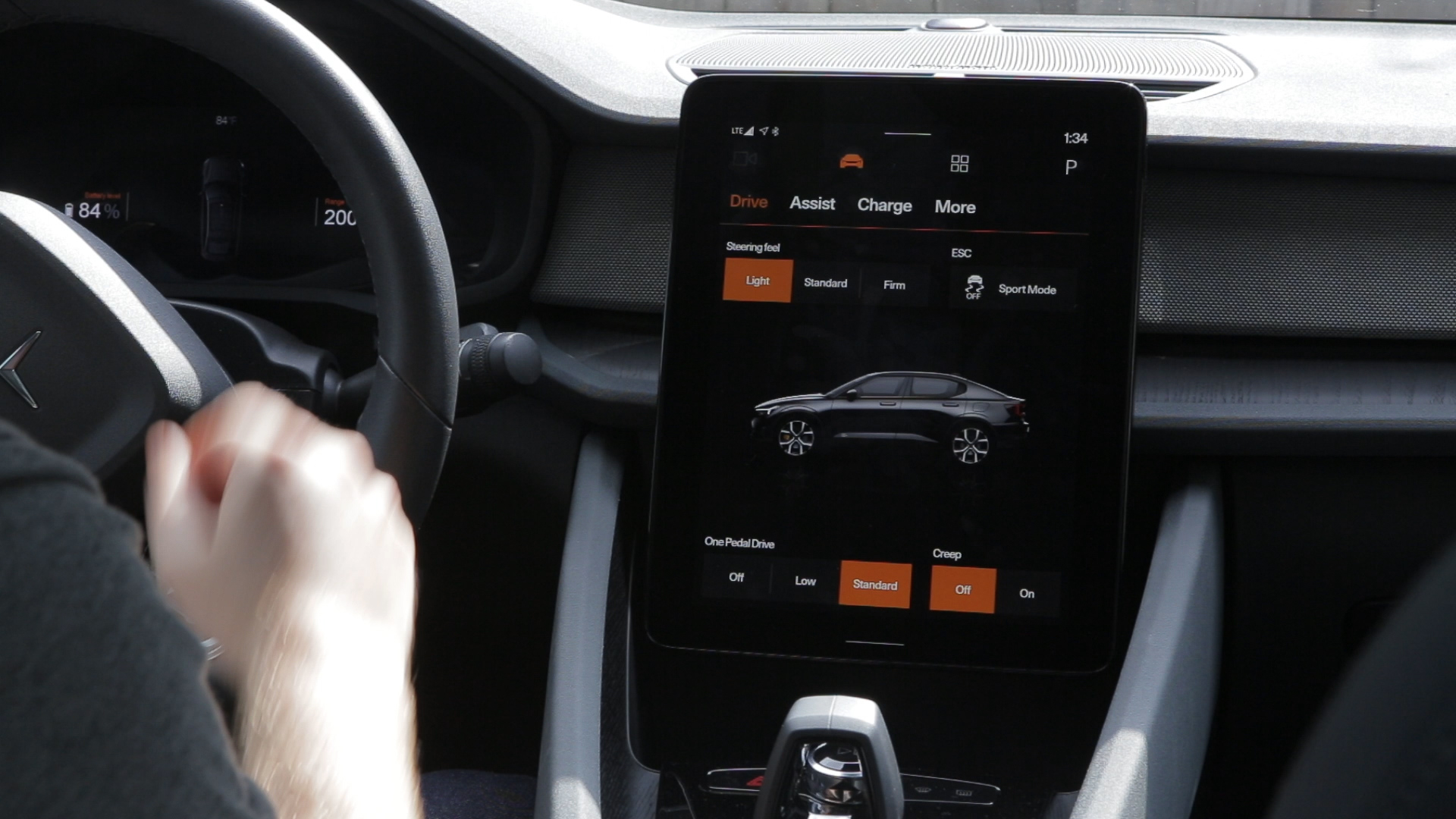Android Automotive review: the future of car entertainment
Android Automotive is built-in to the car rather than requiring a phone connection, and the benefits of that are huge

Though the current incarnation doesn’t look as slick as other infotainment systems, Android Automotive has huge potential if manufacturers embrace it and app makers support it.
-
+
Google assistant is very capable
-
+
No need to link your phone
-
+
Controls car functions as well
-
+
Google Maps is excellent
-
-
Design looks basic
-
-
Runs on Android 10
-
-
Limited range of apps
Why you can trust T3

Android Automotive is not to be confused with Android Auto. While both provide a range of mapping and in-car entertainment functions, while Android Auto is powered by your phone and is projected onto the car’s display, Android Automotive runs on the vehicle’s own processor. The benefit of having this built-in system is that the system can not only control your entertainment but also many of the car’s own features.
When an Android phone is connected to a compatible vehicle, the Android Auto platform takes over the main display. While it’s possible to switch back to the car’s own operating system to make changes to non-entertainment settings there is a disconnect between the two systems. With Android Automotive, everything is running from one system, so you can move easily between car and entertainment settings – and control them all using Google Assistant voice control.
With Android Automotive you can still connect your phone – and your Google account – but your phone is only used for phone functions, and data functions if you want. This means that you don’t even need to have an Android device. You can as easily connect an iPhone via Bluetooth here and still use all of the Android functions.
To experience the Android Automotive system, I tried it out in the new 2022 Polestar 2 electric vehicle. Originally released in summer 2020, this Tesla Model 3 rival from Volvo has been updated for the 2022 model with a choice of single and dual-motor versions and a range of up to 265 miles. More vehicles are expected to roll out with Android Automotive in the next year, including models from Volvo, General Motors and Renault.
Android Automotive review: Features
In the Polestar 2, Android Automotive runs on an 11.15-inch portrait LCD display. It is powered by an Intel Atom processor and Intel HD graphics. Hardly top-end hardware but more than enough to cope with the current software, as well as the next few updates.
The current install is Android Automotive 10, based on Android 10, and while there are release notes for Android Automotive 11 on the Android website, there is no confirmation as to when versions will be upgraded.
The main feature here is Google Maps. The Polestar 2 also has a 12-inch instrument display behind the steering wheel which is able to display directions and maps in addition to the main tablet display. This means that you can browse other functions on the main display while still keeping your directions at hand.
In the apps view, the pre-installed apps include a driver performance, Bluetooth media player, Spotify, a radio app and a phone app, as well as Maps and Google Assistant. You can download more apps from the Google Play store if you log in with your Google account, though it won’t bring over your apps automatically.
There’s not the full range of apps you find in the regular Google Play store, as these need to specifically be made available for Android Auto by developers (and still run on Android 10). There is a wide range of streaming apps for music, but no games, news or messaging services.
At the top of the screen, there is an icon for the car features. Once pressed, you can control a range of vehicle settings, from the one-pedal driving and driving assist modes to interior lighting and door locking. You’ll also find the detailed charging information here. The vehicle’s climate controls appear at the bottom of the screen of both the main display and the map view.
A separate menu at the top of the screen gives access to the Polestar 2’s exterior cameras. You can view each of the front, rear, left and right cameras separately or create a 360-degree top-down view from all four.
Your phone can be connected to the Polestar 2 in two ways: a standard Bluetooth pairing will allow you to import your contacts and music while downloading the Polestar app to your phone will allow you to link it fully. This app works as a digital key to unlock the vehicle, as well as adjust the climate controls and check the charging levels. The car also has a built-in data SIM for LTE connection and Wi-Fi to connect to your home network.

Main display of the Android Automotive system in the Polestar 2
Android Automotive review: Design
Android Automotive is designed to be reskinned to fit with the look and feel of the manufacturer. The only other vehicle I have seen it on so far is the Hummer EV, and it looks different from the display on the Polestar 2.
The design that features here looks particularly stock for an Android device. Everything runs in a dark mode, with white text on a black background – presumably to avoid too many distractions.
The main screen offers a four-part grid, divided into your maps, Google Assistant, phone and music. This cannot be customized, which is a real shame, but it is functional and allows easy access when on the move. It would be nice to see a few more options here for adjusting the look and feel of the screens, though there’s currently no sign of it in release 11.
The best-looking menus are those which control the Polestar’s own vehicle functions – which have presumably been designed by the Polestar team themselves. It would have been nice to see this styling taken all the way through the other menus, but perhaps is was too tricky to do.

Camera controls in the Polestar 2
Android Automotive review: In use
The best thing about the Android Automotive system is that it feels like part of the car rather than an add-on. Being able to switch between changing vehicle settings and music never felt like a departure, as it can do on Android Auto.
For most drivers, Google Maps is the most important part of this system and it works effortlessly. The combination of the instrument display and the center panel maps means that you always have a clear view of where you are headed.
Searching for destinations is easy using the on-screen keyboard or the Google Assistant voice commands. In fact, the Google Voice assistant was my favorite feature, with great voice recognition that meant I didn’t have to keep repeating myself. I also love that you can use it for a wide range of the car’s controls – though it was a bit of a guessing game as to what functions it would control at first. The manual glosses over this, when some examples might have been handy.
Accessing the main grid menu is via an upward swipe – which again, is not obvious unless you use an Android device already. I did find that sometimes the climate settings would display when trying to bring up the main menu too, as they sit at the bottom of the screen where you swipe up from. Call me old school, but a main menu button at the top might have been handy too.

Google Maps on the instrument panel of the Polestar 2
Android Automotive review: Verdict
Android Automotive is by no means the perfect vehicle operating system and the current incarnation feels like it still has a long way to come. There’s a lot you can’t do here that you can on other systems, including on Android Auto via your phone. That said, it is a solid platform that performs the essential tasks very well.
As good as Android Auto and CarPlay are, having a built-in OS makes much more sense and provides a more seamless operation of the car. I hope that with the rollout of Android Automotive 11, and hopefully 12, the abilities of this platform will continue to improve. And that developers will work harder to skin the system to suit their own style.

Vehicle controls on the Polestar 2
Android Automotive review: Also consider
For iPhone users, Apple CarPlay functions in much the same way as Android Auto and allows you to bring a number of apps to your car’s display. Wireless connections for CarPlay and Android Auto are also now becoming more common, meaning you don’t even need to plug your phone in.
Android Automotive is only available in a small number of vehicles right now and is likely to be limited to more premium models for some time. If you want a similar experience, Android Auto is now available on a wide range of cars. While it won’t offer the integration of Android Automotive, it does give you some more functionality.
- Best Android Auto head unit: improve your in-car entertainment
Sign up to the T3 newsletter for smarter living straight to your inbox
Get all the latest news, reviews, deals and buying guides on gorgeous tech, home and active products from the T3 experts
As T3's Editor-in-Chief, Mat Gallagher has his finger on the pulse for the latest advances in technology. He has written about technology since 2003 and after stints in Beijing, Hong Kong and Chicago is now based in the UK. He’s a true lover of gadgets, but especially anything that involves cameras, Apple, electric cars, musical instruments or travel.
-
 Polar’s new subscription feature lands in the shadow of Garmin’s Connect+ rollout
Polar’s new subscription feature lands in the shadow of Garmin’s Connect+ rolloutPR genius or timing disaster? Polar’s new Fitness Programme adds adaptive training to its ecosystem
By Matt Kollat Published
-
 New Orient Star watches offer a glimpse of the magic within
New Orient Star watches offer a glimpse of the magic withinThere are two new skeleton pieces
By Sam Cross Published
-
 Netflix's most surprising 100%-rated sci-fi series returns with gorgeous trailer
Netflix's most surprising 100%-rated sci-fi series returns with gorgeous trailerLove Death + Robots is back for more
By Max Freeman-Mills Published